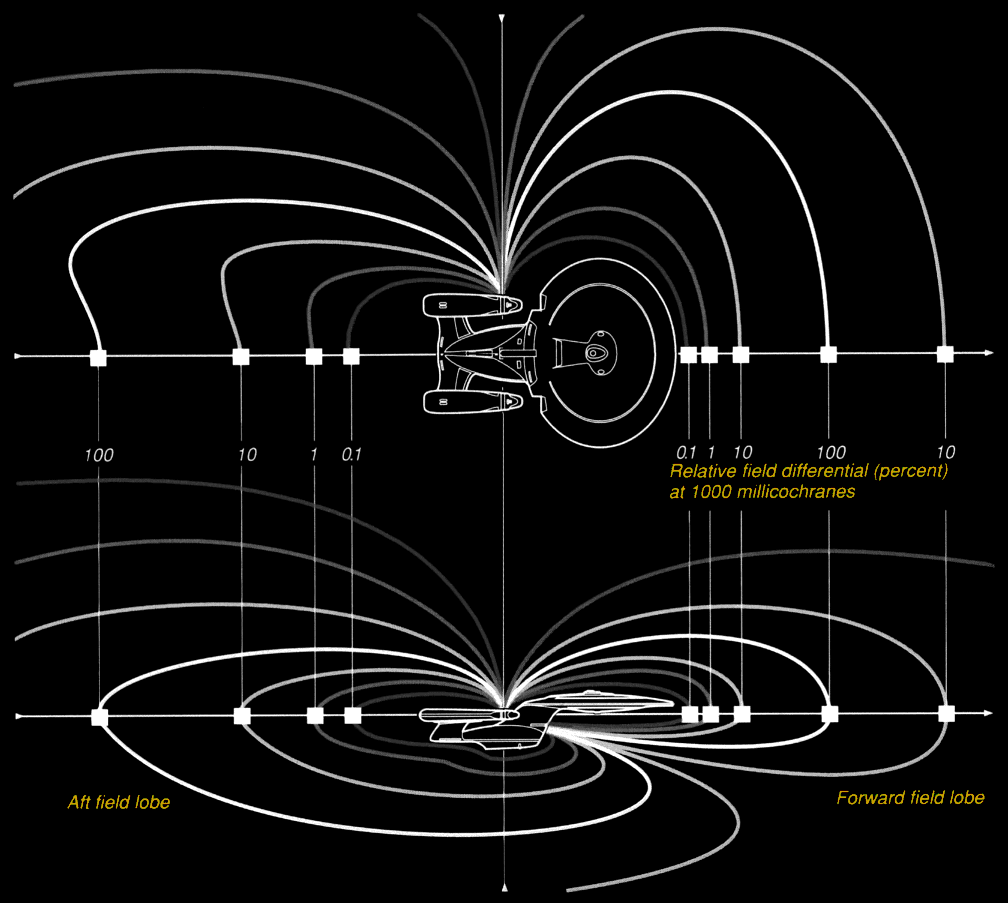Independent Mini Fusion & Warp Reactors in each Nacelle along with a small fuel supply.
Basically each Warp Nacelles are Self Contained StarShips without any of the crew comforts or amenities.
The StarDrive & Saucer Sections get their own Large Fusion Reactors & Warp Reactors.
Ergo they have higher power output since they could potentially have 4x M/A-M warp cores, each one powering each section.
Therefore, you don't divide the power up as much to each individual section.
If a Warp Nacelle gets destroyed, somebody can literally bring a spare from storage and have it follow the ship that's going to bring it to it's new vessel and have it substitute right in for the lost Warp Nacelle.
There are ALOT of PRO(s) & CON(s) to doing this Warp Nacelle System.
PRO(s):
- Less Mass needed for the StarDrive & Saucer Section to deal with when manuevering in regular space.
- Eliminates the need for the Warp Nacelle pylon (less mass, less surface area to target, less structure to defend, power, maintain, etc)
- Battle Field quick replacement from allie if spare Warp Nacelle is needed to replace any lost parts. What usually would require ALOT of time in Dry-Dock can be swapped in < 1 minute and get a vessel back to FTL ready status.
- Each Warp Nacelle would have it's own power source, ergo allowing it to consume more energy for higher levels of Warp Speed for combat purposes.
- Each Warp Nacelle would have more independent energy resources to run it's own independent shields, weapons, etc.
- The rest of the Saucer & StarDrive can be run on their own independent Reactors, ergo each section would have higher fire power & shields then more traditional designs.
- Having your StarDrive / Saucer / Warp Nacelles be independent units opens up ALOT of new Close Formation Manuevering and Tactical options that didn't exist when Ships were one whole solid ship.
CON(s):
The Down-side is you have to make sure that your:
- Wireless Communication link to your Warp Nacelle/StarDrive/Saucer is solid an can't be "Hacked" / Jammed
- It can't be easily boarded and taken over via physical brute force boarding parties.
- It has enough basic AI to react with the mother ship that it does what it needs to do even when there are jamming signals at play on the battle field.
- You need multiple redundant form of Wireless communications like SubSpace Radio, Real Space Radio, Light Based Communication (LiFi), etc.
- Part of your vessel can be hijacked from you at any given time and turn against you, you need ALOT of security measures in place to prevent that.
Don't the DSC nacelles attach for warp and detach for impulse? If so, there's no mystery as to how they work as far as warp goes.
But I think that's more because the USS Discovery is a legacy StarShip design.
More "Modern" 31st - 32nd century designs seems to divide the vessel into various modular parts that fly in close formation with each piece.


 The Saga is a newer build the kasathans developed because their colony ships, which they used to reach the Pact Worlds and which serve as their home, weren't really capable of matching many alien ships. The wings on the Saga also house its small craft bays.
The Saga is a newer build the kasathans developed because their colony ships, which they used to reach the Pact Worlds and which serve as their home, weren't really capable of matching many alien ships. The wings on the Saga also house its small craft bays.